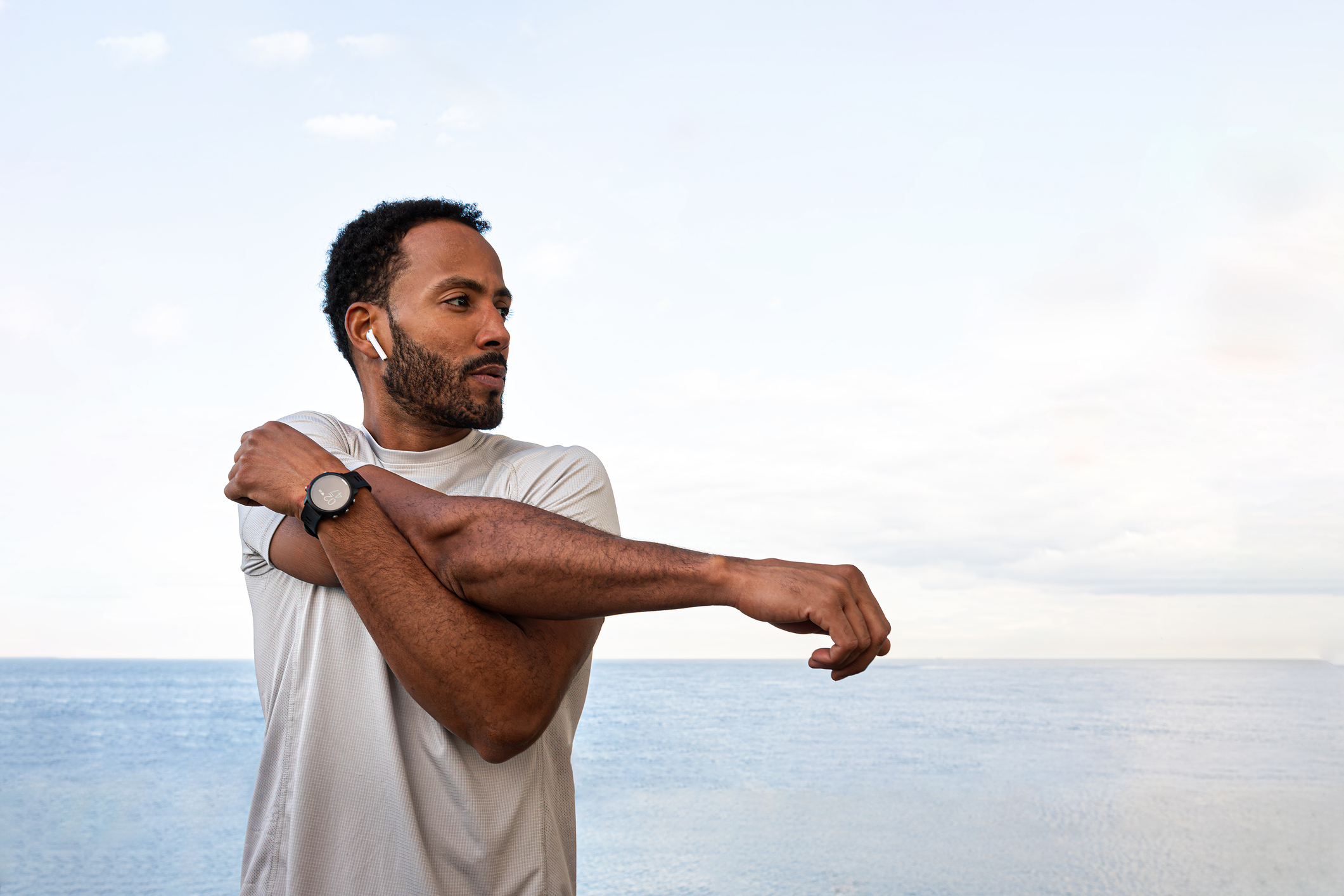During strenuous exercise, the neuromuscular system is repeatedly stressed, causing impairments to occur at various potential sites along the brain-to-muscle pathway. These perturbations cause a reduction in the ability of our muscles to generate force, which can increase our sense of effort, cause us to slow down and reduce our capacity to perform high intensity exercise. There are, globally, two primary causes of this “neuromuscular fatigue.” First, voluntary activation of the muscles by the nervous system can be reduced. Second, contractile function, or the muscle’s intrinsic ability to respond to neural input, can be reduced owing to perturbations occurring within muscle cells. Using neurostimulation methods, the contribution of both the nervous system and muscle to reductions in maximal muscle force-generating capacity can be measured.
In recent years, research has focused on how the characteristics of the aerobic exercise we perform, such as the intensity and duration, influence neuromuscular fatigue and its mechanisms. However, research focused on how the modality of exercise influences the magnitude and mechanisms of neuromuscular fatigue is lacking.
In our study, published in the May 2022 issue of Medicine & Science in Sports & Exercise®, we compared the effects of the two most common types of whole-body dynamic exercise, running and cycling, on neuromuscular fatigue. To do so, we recruited 17 males trained in both endurance running and cycling, and had them perform running and cycling at a matched intensity (105% of the gas exchange threshold) and duration (three hours) using a crossover design. Neuromuscular function was assessed in the right knee extensor at pre-, mid- and post-exercise, and included isometric maximal voluntary contraction force, voluntary activation, contractile function and alpha-motoneuron excitability.
Our results demonstrated that the magnitude of the decrease in maximal force-generating capacity of the knee extensors was similar between the two modalities. Specifically, maximal force was reduced by ~ 25% following both cycling and running. However, the mechanisms contributing to this force loss were distinct between cycling and running. Specifically, the reduction in muscle force in response to cycling was primarily due to mechanisms residing within the muscle. In contrast, the reductions in response to running were due almost exclusively to impairments in the capacity of the nervous system to activate muscle, concurrent with greater reductions in motoneuron excitability. These results can likely be explained by differences in the mechanical and metabolic demands imposed on the quadriceps during the respective exercise modalities.
An interesting finding was that, despite a substantial reduction in force-generating capacity, contractile function of the quadriceps was well preserved following three hours of running. This emphasizes the important role of the nervous system in contributing to neuromuscular fatigue, with the substantial loss in motoneuron excitability indicating that spinal mechanisms might have been implicated. Moreover, the limited change in contractile function in response to running indicates low metabolic stress. As exercise-induced peripheral adaptations occur in response to the degree of local perturbation, this result has potential implications for adaptations to running and cycling. Our results highlight the importance of aerobic exercise modality in determining the causes of neuromuscular fatigue.

Callum Brownstein (@CGBrownstein), Ph.D., is a postdoctoral researcher at Jean Monnet University (Saint Etienne, France). He completed his Ph.D. at Northumbria University (Newcastle, U.K.), where he assessed recovery of neuromuscular function following high-intensity intermittent exercise. His current research focuses on the acute integrative response to whole-body exercise in athletes, healthy active populations and clinical populations, with a focus on neuromuscular perturbations.

Guillaume Millet (@kinesiologui), PhD, is a professor of exercise physiology at Jean Monnet University (Saint-Etienne, France). After graduating from the University of Franche-Comté in 1997, he held various positions in Dijon, Saint-Etienne and Grenoble. Between 2013 and 2018, he was professor in the Human Performance Laboratory and the Faculty of Kinesiology at the University of Calgary (Canada) where he led a research group on neuromuscular fatigue. In 2019, he was named a senior member at the Institut Universitaire de France. His general research area investigates the physiological, neurophysiological and biomechanical factors associated with fatigue, both in extreme exercise (ultra-endurance) and patients (neuromuscular diseases, cancer, multiple sclerosis, ICU).
Viewpoints presented in SMB commentaries reflect opinions of the authors and do not necessarily represent ACSM positions or policies. Active Voice authors who have received financial or other considerations from a commercial entity associated with their topic must disclose such relationships at the time they accept an invitation to write for SMB.




